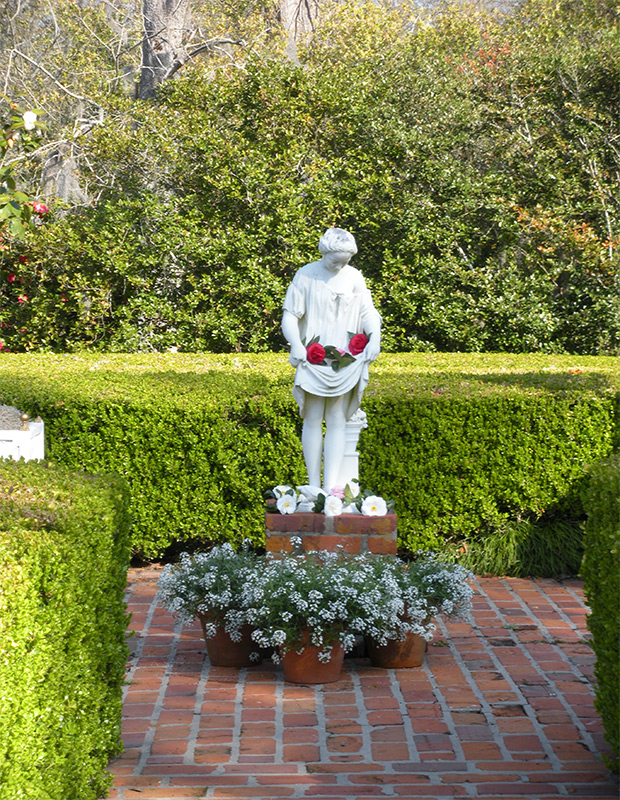After turning right and going down the steps, please walk forward, following the brick walkway straight to the center of the first terrace and pause once you reach the sundial in front of you. The first terrace nearest the house overlooking the gardens below has always been a formal parterre garden. This boxwood parterre looks very much today the way it must have looked when the landscape gardener for Susan and David Barrow first laid it out in 1848, with one exception: all paths in the garden were originally gravel, and now they are brick. Only the retaining wall that encircles the parterre is original to the garden. Over the years it has been patched and shored up, in many places, the ancient bricks are showing wear, but they have been left on purpose, primarily to reveal the wall’s antiquity.
When the Trimbles acquired Afton Villa, the parterre was in a serious state of decline. Having suffered ten years of neglect following the fire, the boxwood hedges had grown out of bounds, much too rank and high, looking snaggle-toothed with dieback. The whole parterre had lost its pattern. Today the boxwood is level and trimmed regularly giving the old parterre a finished, cared-for appearance once more. Here, too, can be found the oldest azalea bush, The Pride of Afton, from which Dr. Robert Lewis, former owner, took cuttings to establish hundreds of the variety throughout the gardens
From the sundial, turn right towards the walkway. As you turn right and continue to walk forward, you’ll see a marble statue of a young girl feeding birds from her apron at the entrance to the maze. She was found in the garden, but her Victorian origin is a mystery, and she is called Flora. She stands on a plinth of old bricks that bear a plaque with the U.S. presidential seal and an inscription noting the bricks are from the White House, recovered when it was renovated during the Truman administration.

Standing in front of Flora, follow the walkway on the left to the top of the next terrace. Once there, you see another white marble statue in the distance through an opening of clipped yew columns and sasanqua trees that leads to the descending terraces beyond. This statue marks the progression of the other terraces descending to the ravine far below.
At the top of the steps, you have reached the Grand Staircase. Please proceed down the steps and keep walking towards the round bed and statue below.